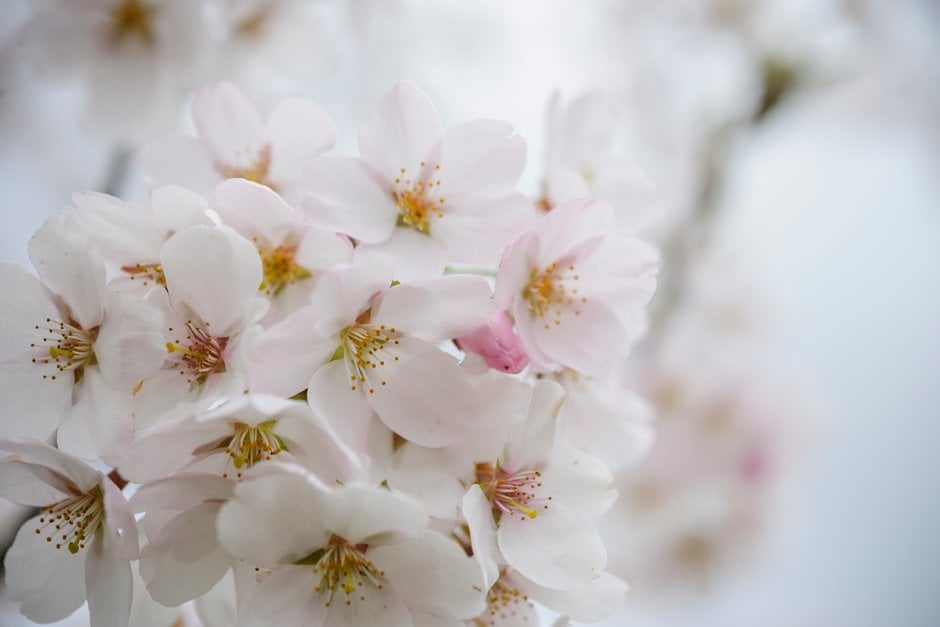Prunus × yedoensis 'Somei-Yoshino'

Yoshino cherry
A small, deciduous Japanese flowering cherry tree or shrub with broad-spreading branches and ovate leaves emerging a coppery-bronze colour in spring to contrast with the blossom, turning dark green then finally red-orange in the autumn. Large, single flowers are almond-scented, blush white or tinged pink with a darker centre, and appear prior to the foliage in spring, followed by shiny black fruits loved by birds. First cultivated in the early 20th Century, it is said to be the most widely-planted flowering cherry tree in Japan
Synonyms
Prunus 'Yoshino'Size
Ultimate height
Higher than 12 metresTime to ultimate height
20–50 yearsUltimate spread
Wider than 8 metresGrowing conditions
Moisture
Moist but well–drained, Well–drainedpH
Acid, Alkaline, NeutralColour & scent
| Stem | Flower | Foliage | Fruit | |
| Spring | White Pink | Bronze | ||
|---|---|---|---|---|
| Summer | Green | |||
| Autumn | Red Orange | |||
| Winter |
Position
- Full sun
Aspect
South–facing or West–facing or East–facing or North–facing
Exposure
Exposed or Sheltered Hardiness
H6Botanical details
- Family
- Rosaceae
- Native to GB / Ireland
- No
- Foliage
- Deciduous
- Habit
- Spreading branched
- Genus
Prunus can be deciduous or evergreen trees or shrubs with showy flowers in spring, and often good autumn foliage colour. Some have edible fruit in autumn, and a few species have ornamental bark
- Name status
Accepted
How to grow
Cultivation
Grow in moderately fertile, moist but well-drained soil in full sun. Dislikes heavy, wet soils. Tolerant of pollution. May require staking. See tree cultivation and staking trees for further advice
Propagation
Propagate by softwood cuttings in early summer with bottom heat
Suggested planting locations and garden types
- Cottage and informal garden
- City and courtyard gardens
- Wildlife gardens
Pruning
Pruning group 1. Prune in mid-summer if silver leaf is a problem
Pests
May be susceptible to caterpillars, leaf-mining moths, cherry blackfly and bullfinches
Diseases
May be susceptible to peach leaf curl, cherry leaf scorch, silver leaf, bacterial canker, blossom wilt and honey fungus
Get involved
The Royal Horticultural Society is the UK’s leading gardening charity. We aim to enrich everyone’s life through plants, and make the UK a greener and more beautiful place.

